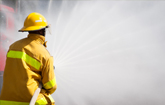WASHINGTON, Oct. 22 /PRNewswire-USNewswire/ -- A NASA panel that investigated the unsuccessful April 28 launch of a scientific balloon from Alice Springs, Australia, has released its report.
(Logo: http://photos.prnewswire.com/prnh/20081007/38461LOGO )
(Logo: http://www.newscom.com/cgi-bin/prnh/20081007/38461LOGO )
NASA was attempting to launch the balloon carrying a gamma-ray telescope belonging to the University of California at Berkeley. The Nuclear Compton Telescope, which was partially destroyed in the accident, was designed to look for distant galaxies from a vantage point high in Earth's upper atmosphere.
The scientific payload inadvertently separated from a mobile crane being used for the launch, and it was dragged approximately 150 yards by the airborne balloon. Spectators narrowly escaped injury when the payload hit an airport fence and a car.
NASA's Mishap Investigation Board determined weather conditions were acceptable for launch, and there were no technical problems with the vehicle or the payload.
The board was led by Michael L. Weiss of NASA's Goddard Space Flight Center in Greenbelt, Md. The board's report listed 25 proximate, intermediate and root causes related to insufficient risk analysis, contingency planning, personnel training, technical knowledge, government oversight and public safety accommodations.
"There is no question in our minds that balloon launches are fragile processes," Weiss said. "The mishap board reviewed a large volume of information about the accident and conducted numerous interviews with eyewitnesses. But in the course of our investigation, we found surprisingly few documented procedures for balloon launches. No one considered the launch phase to be a potential hazard."
The purpose of the investigation was to discover what caused the mishap and provide recommendations to help prevent similar future mishaps. The board listed 44 recommendations regarding the need for better communication; more robust range and ground safety plans and procedures; and better understanding of potentially unsafe conditions that can lead to accidents.
Immediately after the accident in Australia, launch operations at all of NASA's balloon sites were suspended. NASA's Balloon Program Office will resume launches once it has implemented and verified new procedures to safeguard launch crews and the public.
"We have learned a lot from this incident, and we'll have a better balloon program because of it," said Rob Strain, Goddard Space Flight Center director.
The Columbia Scientific Balloon Facility in Palestine, Texas, conducts balloon launches for NASA under contract to the Balloon Program Office. The program office is based at NASA's Wallops Flight Facility in Virginia, which is managed by Goddard.
To download the report, visit:
For information about NASA and agency programs, visit:
SOURCE NASA
WANT YOUR COMPANY'S NEWS FEATURED ON PRNEWSWIRE.COM?
Newsrooms &
Influencers
Digital Media
Outlets
Journalists
Opted In






Share this article